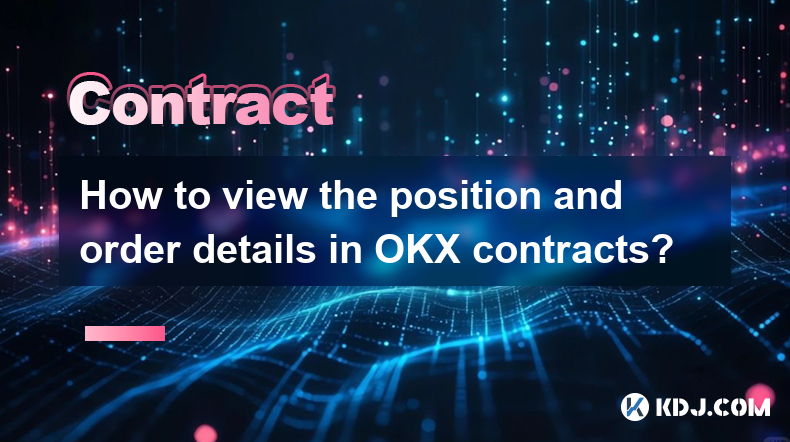-
 Bitcoin
Bitcoin $84,380.9629
-0.68% -
 Ethereum
Ethereum $1,587.8040
0.39% -
 Tether USDt
Tether USDt $0.9997
0.02% -
 XRP
XRP $2.0611
-0.10% -
 BNB
BNB $592.1695
0.41% -
 Solana
Solana $134.0171
-0.42% -
 USDC
USDC $1.0000
0.00% -
 Dogecoin
Dogecoin $0.1576
1.44% -
 TRON
TRON $0.2401
-3.06% -
 Cardano
Cardano $0.6295
2.16% -
 UNUS SED LEO
UNUS SED LEO $9.2244
1.69% -
 Chainlink
Chainlink $12.5592
0.40% -
 Avalanche
Avalanche $19.0618
0.03% -
 Toncoin
Toncoin $2.9920
1.85% -
 Stellar
Stellar $0.2398
0.17% -
 Shiba Inu
Shiba Inu $0.0...01228
4.28% -
 Hedera
Hedera $0.1653
1.46% -
 Sui
Sui $2.1201
-0.04% -
 Bitcoin Cash
Bitcoin Cash $335.2957
0.47% -
 Polkadot
Polkadot $3.6693
0.93% -
 Litecoin
Litecoin $75.9657
1.55% -
 Hyperliquid
Hyperliquid $17.0326
-0.70% -
 Dai
Dai $1.0000
0.01% -
 Bitget Token
Bitget Token $4.4071
0.71% -
 Ethena USDe
Ethena USDe $0.9992
0.02% -
 Pi
Pi $0.6423
4.69% -
 Monero
Monero $215.4419
-0.65% -
 Uniswap
Uniswap $5.1801
0.13% -
 Pepe
Pepe $0.0...07322
1.11% -
 OKB
OKB $50.2807
-0.70%
How to view the position and order details in OKX contracts?
OKX's "Contracts" section displays positions, orders, and history. Different tabs offer varying detail levels, including unrealized P/L, enabling efficient order and position management via filters and charting tools.
Mar 24, 2025 at 07:00 am

Key Points:
- Accessing your OKX contract positions requires navigating to the "Contracts" section of the platform.
- Order details, including filled and unfilled orders, are readily available within the same interface.
- Different views (e.g., "Positions," "Orders," "History") provide varying levels of detail.
- Understanding the different tabs and filters within the OKX platform is crucial for efficient position and order management.
- The platform offers various tools to help you analyze your positions and orders effectively.
How to View the Position and Order Details in OKX Contracts?
OKX, a prominent cryptocurrency exchange, provides robust tools for managing contracts trading. Understanding how to effectively view your positions and order details is crucial for successful trading. This guide will walk you through the process.
First, you need to log in to your OKX account. Once logged in, you'll find the "Contracts" section prominently displayed on the main dashboard. This section is your central hub for all contract-related activities. Clicking on it will open a new page dedicated to your contract positions and order management.
Within the "Contracts" section, you'll encounter several tabs or views. The most important are the "Positions," "Orders," and "History" tabs. The "Positions" tab displays your currently open positions, showing the contract, quantity, entry price, unrealized P/L (profit or loss), and margin used. Each position provides a detailed breakdown, allowing for easy monitoring of your active trades.
The "Orders" tab showcases your pending and unfilled orders. This view is crucial for managing your active trading strategies. You can see the order type (limit, market, etc.), quantity, price, and status (pending, filled, cancelled). This allows you to track orders and make adjustments as needed.
The "History" tab provides a comprehensive record of your past trading activity. This includes both filled and cancelled orders, providing a complete audit trail of your contract trading history. You can filter this history by date, contract, and other parameters to easily find specific trades.
To view detailed information for a specific position or order, simply click on the respective entry. This will open a pop-up window or a new page showing all the relevant details, such as timestamps, fees, and any other relevant information about that particular trade.
Navigating the OKX contract interface effectively requires understanding the available filters. These filters allow you to refine your view of positions and orders, focusing on specific contracts, time periods, or order types. This is particularly useful when managing a large number of concurrent positions or orders.
The platform also incorporates charting tools that allow you to visualize your position changes over time. These charts often integrate directly with your position data, providing a visual representation of your P/L and other key metrics. This visual aid can significantly improve your understanding of your trading performance.
Furthermore, OKX provides advanced features like the ability to export your trading history. This functionality enables you to download your transaction data for record-keeping, tax purposes, or for use in external analysis tools. The export options usually include various formats like CSV, making data integration straightforward.
How to understand the information displayed in OKX contract positions?
The OKX contract positions display shows crucial data points like contract symbol (e.g., BTC-USD), position size (number of contracts), average entry price, current market price, unrealized P/L (profit or loss), margin used, and liquidation price. Understanding these details is crucial for risk management.
How can I cancel an order in OKX contracts?
Locate the order in the "Orders" tab. Click on the order to view its details. You'll usually find a "Cancel" or "Close" button associated with each order. Clicking this button will send a cancellation request to the exchange.
What does unrealized P/L mean in OKX contracts?
Unrealized P/L represents the profit or loss you would incur if you closed your position at the current market price. It's not a realized profit until you actually close the position.
How do I find my trading history in OKX contracts?
Your trading history is accessible via the "History" tab within the "Contracts" section. This tab provides a detailed record of your past trades, including filled and cancelled orders. You can filter by date, contract, and other criteria.
What are the different order types available in OKX contracts?
OKX supports various order types, including market orders (immediate execution at the current market price), limit orders (execution at a specified price or better), and stop orders (triggered when the price reaches a specific level). Understanding these different order types is key to implementing your trading strategies effectively.
How do I manage my margin in OKX contracts?
OKX allows you to manage your margin by adjusting your leverage and adding or withdrawing funds from your margin account. Careful margin management is crucial to avoid liquidation. The platform usually provides clear indications of your margin usage and the risk of liquidation.
What is the liquidation price in OKX contracts?
The liquidation price is the price at which your position will be automatically closed by the exchange due to insufficient margin. Understanding your liquidation price is critical for risk management in leveraged trading.
Disclaimer:info@kdj.com
The information provided is not trading advice. kdj.com does not assume any responsibility for any investments made based on the information provided in this article. Cryptocurrencies are highly volatile and it is highly recommended that you invest with caution after thorough research!
If you believe that the content used on this website infringes your copyright, please contact us immediately (info@kdj.com) and we will delete it promptly.
- 5 Cryptos That Aren't Sleeping Anymore. From Wall Street Warming Up to Tokenized Assets
- 2025-04-19 07:20:13
- Litecoin (LTC) Returns to Familiar 10x Territory: How High Could It Go This Time?
- 2025-04-19 07:20:13
- Hashkey Group is Moving to Increase its Presence in the Growing ETF Market of Asia. By Launching an XRP-Targeted Fund
- 2025-04-19 07:15:13
- Berachain (BERA) Price Crashes to a Record Low as Stablecoins in Its Ecosystem Continue Their Recent Plunge
- 2025-04-19 07:15:13
- United States asset manager Canary Capital has filed to list an exchange-traded fund (ETF) holding the Tron blockchain network's native token
- 2025-04-19 07:10:13
- XRP price hovers above $2.08 as traders weigh conflicting signals from spot and derivatives markets, suggesting short-term indecision.
- 2025-04-19 07:10:13
Related knowledge

How does Tail Protection reduce the loss of liquidation?
Apr 11,2025 at 01:50am
Introduction to Tail Protection in CryptocurrencyTail Protection is a mechanism designed to mitigate the risks associated with liquidation in cryptocurrency trading. Liquidation occurs when a trader's position is forcibly closed by the exchange due to insufficient margin to cover potential losses. This often happens in leveraged trading, where traders b...

What are the consequences of an imbalance in the long-short ratio?
Apr 13,2025 at 02:50pm
The long-short ratio is a critical metric in the cryptocurrency trading world, reflecting the balance between bullish and bearish sentiments among traders. An imbalance in this ratio can have significant consequences on the market dynamics, affecting everything from price volatility to trading strategies. Understanding these consequences is essential fo...

How to judge the market trend by the position volume?
Apr 11,2025 at 02:29pm
Understanding how to judge the market trend by position volume is crucial for any cryptocurrency trader. Position volume, which refers to the total number of open positions in a particular cryptocurrency, can provide valuable insights into market sentiment and potential price movements. By analyzing this data, traders can make more informed decisions ab...

Why does a perpetual contract have no expiration date?
Apr 09,2025 at 08:43pm
Perpetual contracts, also known as perpetual futures or perpetual swaps, are a type of derivative product that has gained significant popularity in the cryptocurrency market. Unlike traditional futures contracts, which have a fixed expiration date, perpetual contracts do not expire. This unique feature raises the question: why does a perpetual contract ...

Why is the full-position mode riskier than the position-by-position mode?
Apr 13,2025 at 03:42pm
Why is the Full-Position Mode Riskier Than the Position-by-Position Mode? In the world of cryptocurrency trading, the choice between full-position mode and position-by-position mode can significantly impact the risk profile of a trader's portfolio. Understanding the differences between these two modes is crucial for making informed trading decisions. Th...

How is the liquidation price calculated?
Apr 12,2025 at 01:35am
Introduction to Liquidation PriceLiquidation price is a critical concept in the world of cryptocurrency trading, particularly when dealing with leveraged positions. Understanding how this price is calculated is essential for traders to manage their risk effectively. The liquidation price is the point at which a trader's position is forcibly closed by th...

How does Tail Protection reduce the loss of liquidation?
Apr 11,2025 at 01:50am
Introduction to Tail Protection in CryptocurrencyTail Protection is a mechanism designed to mitigate the risks associated with liquidation in cryptocurrency trading. Liquidation occurs when a trader's position is forcibly closed by the exchange due to insufficient margin to cover potential losses. This often happens in leveraged trading, where traders b...

What are the consequences of an imbalance in the long-short ratio?
Apr 13,2025 at 02:50pm
The long-short ratio is a critical metric in the cryptocurrency trading world, reflecting the balance between bullish and bearish sentiments among traders. An imbalance in this ratio can have significant consequences on the market dynamics, affecting everything from price volatility to trading strategies. Understanding these consequences is essential fo...

How to judge the market trend by the position volume?
Apr 11,2025 at 02:29pm
Understanding how to judge the market trend by position volume is crucial for any cryptocurrency trader. Position volume, which refers to the total number of open positions in a particular cryptocurrency, can provide valuable insights into market sentiment and potential price movements. By analyzing this data, traders can make more informed decisions ab...

Why does a perpetual contract have no expiration date?
Apr 09,2025 at 08:43pm
Perpetual contracts, also known as perpetual futures or perpetual swaps, are a type of derivative product that has gained significant popularity in the cryptocurrency market. Unlike traditional futures contracts, which have a fixed expiration date, perpetual contracts do not expire. This unique feature raises the question: why does a perpetual contract ...

Why is the full-position mode riskier than the position-by-position mode?
Apr 13,2025 at 03:42pm
Why is the Full-Position Mode Riskier Than the Position-by-Position Mode? In the world of cryptocurrency trading, the choice between full-position mode and position-by-position mode can significantly impact the risk profile of a trader's portfolio. Understanding the differences between these two modes is crucial for making informed trading decisions. Th...

How is the liquidation price calculated?
Apr 12,2025 at 01:35am
Introduction to Liquidation PriceLiquidation price is a critical concept in the world of cryptocurrency trading, particularly when dealing with leveraged positions. Understanding how this price is calculated is essential for traders to manage their risk effectively. The liquidation price is the point at which a trader's position is forcibly closed by th...
See all articles
























































































